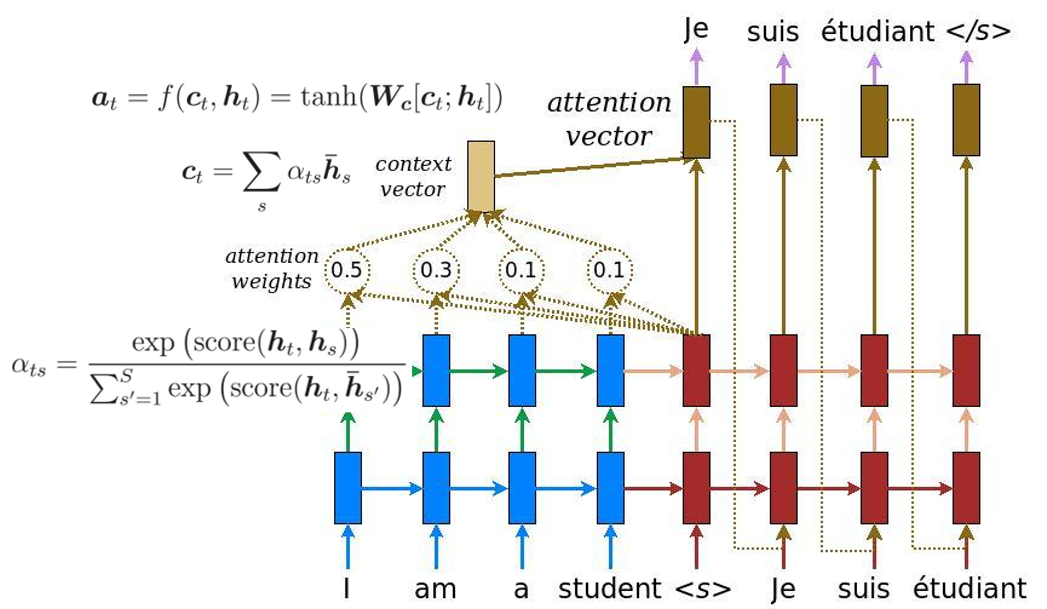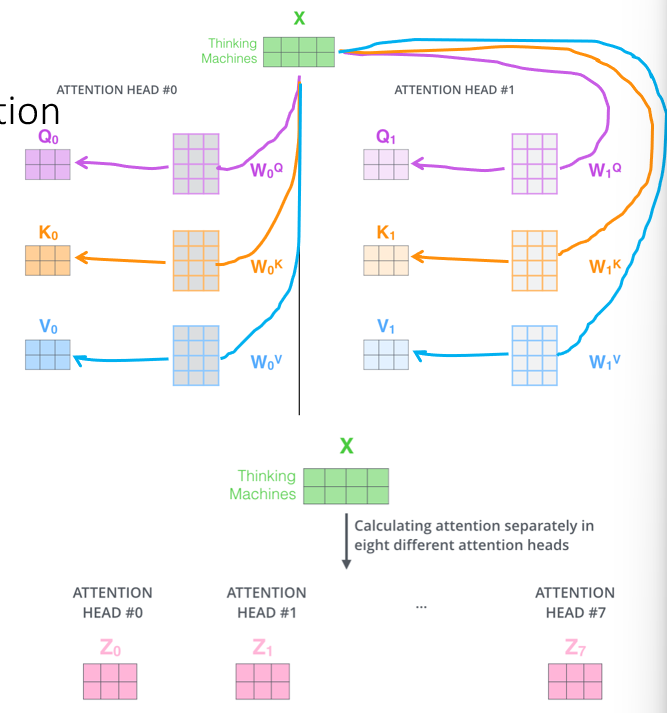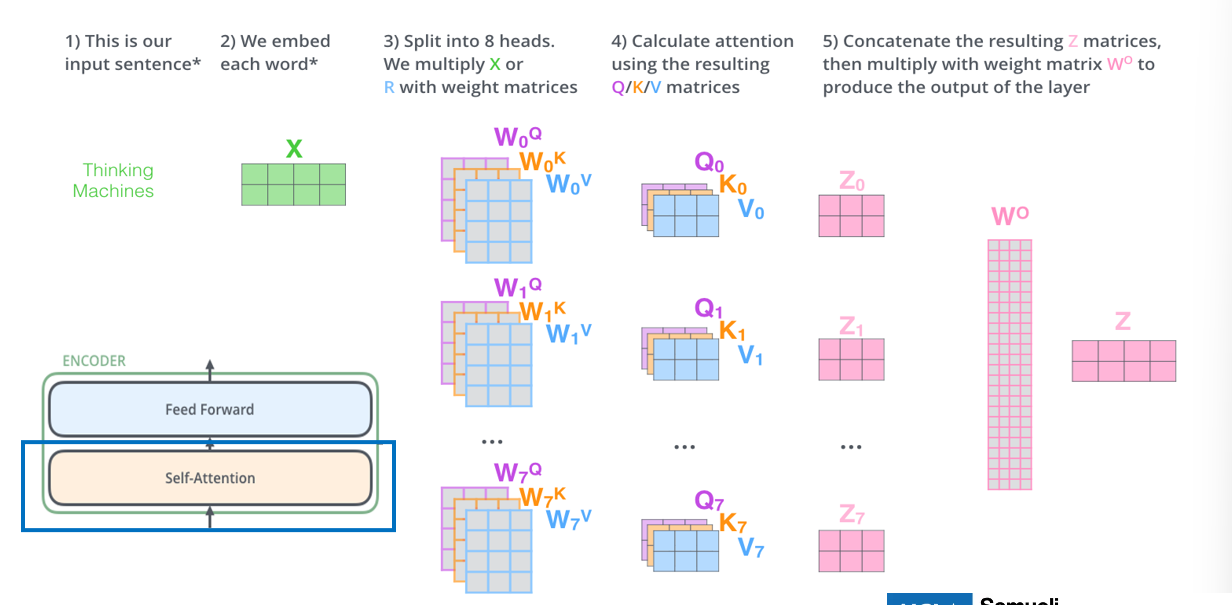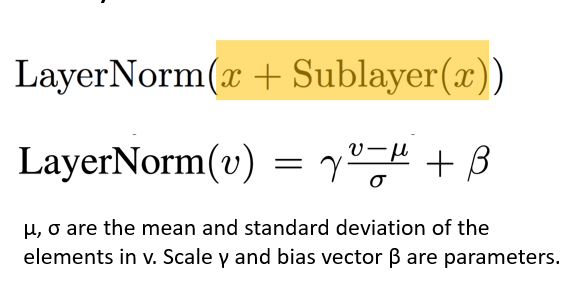9 - Transformers
ucla | CS 162 | 2024-02-09 02:15
Table of Contents
Seq2Seq Models
- input one sequence output another sequence
- e.g., audio -> text, text -> text (contextualized), text -> text
Encoder-Decoder Structure
- idea is to use output of last cell as encoded vector bc (w/ RNN at least) the last cell contains information and contxt on the entire sentence so far

Seq2Seq w/ Attention (Weighted sum)
- the pathway of encoder to context to attention vector; we compute attention by looking at all the attention vectors made by the encoder (

- we make predictions based on attention vectors instead of hidden states

Transformers
- relies entirely on attention for encoder-decoder model instead of relying on recurrent dependency -> parallelizable

Self-Attention
- attention between every token to every other token
- using QKV, compute the following circuits:
- QK circuit:
- Generate
- Generate
- OV circuit:
- generate contextualized (encoded) vectors by multiplying attention to each key/value s.t.
- generate contextualized (encoded) vectors by multiplying attention to each key/value s.t.
- we can parallelize and introduce new weights by first making the QKV matrices using weights and the inputs:
Multi-Headed Attention
- we create multiple self-attention heads using multiple QKV weight matrices and generate multiple contextualized versions of the input vector from each head:

- then we concatenate the outputs and multiply by new output weight matrix

Positional Embedding
- something to be said abt positional relevance (words closer together likely are related in the same context), so we also include positional encoding along with input embeddings:
- t is the word position, k is the parity, i is the dimension index, d is the dimensionality

Residual Connections and Layer Norm
- information loss of the input vector multiple steps in + vanishing gradients -> add back in the sublayer through a residual connection:

- and we want to normalize outputs by adding back in the original embeddings to the contextualized vectors
- for each dimension, normalize value wrt to mean to prevent vectors from becoming to large

Encoder-Decoder Attention
- similar self attention but apply a look ahead mask after dimensional scaling in the self attention
- then pass that into Encoder-Decoder attention which is basically multi-headed attention but pass in Q,K as the contextualized representations from the Encoder
